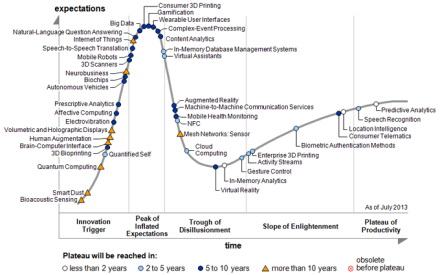Atul Gawande raises a very interesting question in his recent piece in The New Yorker.
The question is, why do some innovations spread so swiftly and others so slowly? He compares two innovations that arose at similar times, surgical anaesthesia and antiseptics. They both were invented in the mid 1800s, in established centres of medical practice. Anaesthesia spread rapidly and quickly became the default practice, even though there were all manner of people who objected to it, ranging from clerics to old surgeons. On the other hand, antiseptics took much longer to be accepted. Although the basic ideas were already published in the Lancet in 1867, even after the 1880s, it wasn’t common practice – not even in the big hospitals! Why?
A key difference, as Gawande points out, is that both innovations helped the patient and saved lives, but one of them required a lot more from the surgeon (proper antiseptic treatment was hard and required some discomfort for the surgeon, who had to put up with carbolic acid and so on). Equally importantly, one of these – the antiseptics – was a hidden cause and effect phenomenon so that it was hard for everyone involved to appreciate the significance of each little step when the phenomenon isn’t so clearly visible.
Apparently, a lot of the same issues prevent effective solutions to some very common but pressing worldwide health issues. Gawande talks about neonatal care in places like India. Many many simple solutions, such as swaddling a baby along with the mother to let the mother’s body temperature regulate the baby’s, aren’t systematically implemented while too much faith is placed on technology-driven solutions such as baby warmers which may not get used due to lack of electricity or spare parts. How does one get these solutions implemented? One could use punishments, or maybe incentives. Neither seem to actually work on their own, and are too hard to ensure correctness of. What one wants is for these things to become norms, and norms get created by an expensive process of teaching cohorts of people who go out and train others, and so on. So, “diffusion is essentially a social process through which people talking to people spread an innovation,”
The rest of the article, which is a fascinating read, goes on to talk about the story of oral rehydration and cholera. The gem of the idea here is that, “coaxing villagers to make the solution with their own hands and explain the messages in their own words, while a trainer observed and guided them, achieved far more than any public-service ad or instructional video could have done.”
I think these lessons are much more broadly applicable beyond public health. Within my own research community, robotics, sometimes we seem to be cooking up more and more elaborate justifications for complex technologies that seem (with my private citizen’s hat on) only suited to showing that we researchers are smart enough to build really complicated systems. We are also very much susceptible to rewarding only the obvious solutions, like anaesthetics, and almost never rewarding the hidden drivers, like antiseptics. If we are serious about one day having some real impact on the world at a large, we also need to heed the rest of the message in Gawande’s story and think about exactly which bits are real bottlenecks to be targeted and how our technology is a solution to some meaningful question out there in the world.
